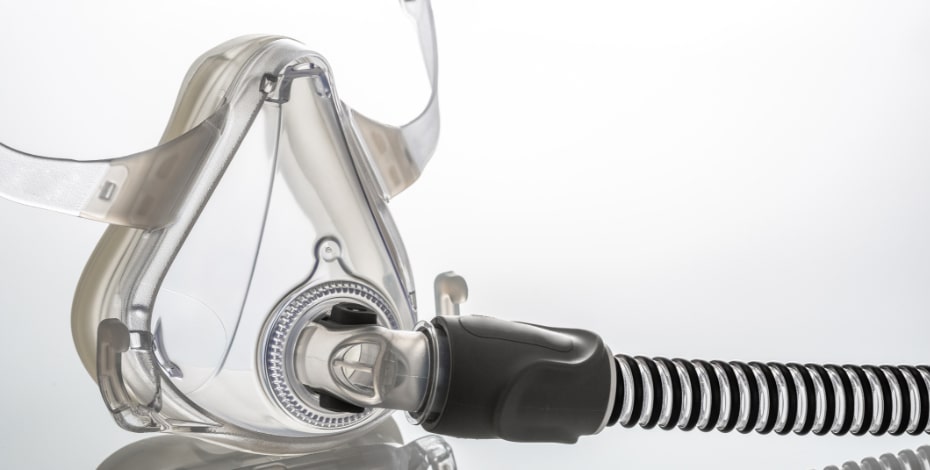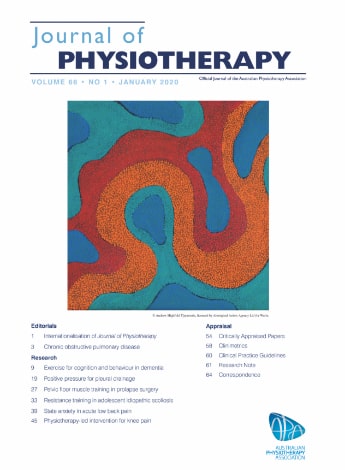
Dive into the research

JOURNAL OF PHYSIOTHERAPY: The January issue is out and as usual there are plenty of excellent articles on the science and practice of physiotherapy.
EXERCISE FOR COGNITION AND BEHAVIOUR IN DEMENTIA
This systematic review finds that exercise reduces global cognitive decline and lessens behavioural problems in people with mild cognitive impairment or dementia. Q&A with Professor Marco Pang.
Before this review, we already knew quite a bit about the effects of exercise for people with mild cognitive impairment and dementia from your previous systematic review. Could you summarise those findings briefly?
That review found that exercise for people with mild cognitive impairment or mild-to-moderate dementia improves sit to stand, step length, balance, mobility and walking endurance. People across these levels of cognitive impairment are more likely to achieve these benefits with supervised multi-modal exercise for about 60 minutes a day, 2–3 days a week.
And what didn’t we know about exercise in this population?
We knew that exercise improves cognition, but most of the evidence related to global cognition, which is a summary measure of diverse cognitive functions such as attention, executive function, memory, language and reasoning. These cognitive functions are managed by different areas of the brain and are known to decline at different rates throughout the disease progression. It is not enough to know that exercise improves global cognition; we need to know what it does to specific cognitive functions.
How much evidence did your review find about the effect of exercise on specific cognitive domains?
Fifty eligible studies were identified, which provided data on over 5000 participants.
Which aspects of cognitive function was exercise helpful for?
Physical exercise can improve working memory. Working memory is one of the cognitive functions that shows earlier decline among all cognitive functions in people with Alzheimer’s disease, and may thus be more sensitive to exercise intervention. There was also very low quality of evidence showing an improvement in language function in the exercise group.
Were there any aspects of cognitive function where it clearly wasn’t helpful?
There was a moderate level of evidence showing that exercise has minimal effect on cognitive flexibility and attention.
Any other benefits?
Exercise also reduced behavioural problems, which are common in this population.
For physiotherapists thinking of applying these results clinically, do you have advice about the exercise regimen?
Aerobic exercise at moderate intensity or above, and a total training duration of greater than 24 hours can lead to a more pronounced effect on global cognition.
References
Law C-K, Lam FMH, Chung RCK, Pang MYC (2020) Physical exercise attenuates cognitive decline and reduces behavioural problems in people with mild cognitive impairment and dementia: a systematic review. Journal of Physiotherapy
Marco Pang is a professor in the Department of Rehabilitation Sciences and the associate director of the University Research Facility in Behavioral and Systems Neuroscience of the Hong Kong Polytechnic University. He is the editor-in-chief of the Hong Kong Physiotherapy Journal and the president of the Hong Kong Physiotherapy Association.

POSITIVE PRESSURE FOR PLEURAL DRAINAGE
The findings of this randomised trial indicate that the intervention was well tolerated with few adverse events, so it can be safely integrated into clinical practice. Q&A with Professor Adriana Lunardi.
Your new trial in the January 2020 issue of the Journal involved people with a fluid collection in the pleural space. What can cause that fluid to build up there?
There are numerous causes of excess fluid in the pleural space, such as cancer, heart failure, thoracic surgery, infection (empyema), and trauma (which can result in blood and air, as well as oedema in the pleural space). To assist in the management of many of these conditions, insertion of an intercostal tube connected to a closed drainage system is recommended.
What did most of the participants have in your study?
In most patients, the fluid collection occurred after trauma, but we also had some people who developed it due to pneumonia or neoplasia.
What was the design of the study?
The trial enrolled 156 inpatients with a fluid collection in the pleural space and with chest drainage in situ. There were three groups: an experimental group that received a set of physiotherapy interventions (incentive spirometry, airway clearance and mobilisation); another experimental group that received those same interventions plus positive airway pressure (high level—15cmH2O), and a control group that received positive airway pressure (very low level—4cmH2O) with no therapeutic effect (sham).
What did you measure?
Days of chest tube drainage, length of hospital stay, pulmonary complications and adverse events were recorded until hospital discharge. Costs in each group were also estimated.
Did this trial find that the intervention had beneficial effects?
Yes. The group that received the positive airway pressure had shorter duration of chest tube drainage and length of hospital stay compared with the other two groups. In addition, the positive pressure group had less frequent pneumonia and less need for antibiotic use than the other groups. Total treatment costs were also lower in the positive pressure group.
Were there any outcomes that didn’t improve?
Despite the benefits observed in this study, the groups did not markedly differ in pulmonary function recovery and oxygenation. Most likely, the performance of patients during spirometry was influenced by the high level of pain. Furthermore, SpO2 was never outside the normal range.
Do you think further research is needed in this area?
The estimates were determined by the cost of each procedure and based on standard costs provided by the hospital. It would be good to confirm the overall findings in a second trial and also to do a more sophisticated health-economic analysis.
References
dos SantosEC, da Silva JS, de Assis Filho MTT, Vidal MB, Monte MC, Lunardi AC (2020) Adding positive airway pressure to mobilisation and respiratory techniques hastens pleural drainage: a randomised trial. Journal of Physiotherapy
Adriana Lunardi holds a PhD in rehabilitation sciences. She is a professor in the Master’s and Doctorate Program in Physiotherapy at the Universidade Cidade de São Paulo and a physical therapist at the School of Medicine, University of São Paulo. Her research fields are hospitalisation and perioperative care and functionality and measuring instruments.

TEN YEARS SINCE THE JOURNAL CHANGED ITS NAME
In 2010, the first issue of the APA’s Journal was published under the name Journal of Physiotherapy, continuing on from Australian Journal of Physiotherapy. A decade later, has the name change achieved what was intended? Q&A with the editor, Clinical Associate Professor Mark Elkins.
What was the rationale behind the name change?
This change was intended to reflect the Journal’s growing status as a major international journal in physiotherapy. Members of the Editorial Board felt that the name change was necessary to ensure that the Journal remained at the forefront of the profession. For example, some overseas academic physiotherapists told us that they liked our journal but their university administrators preferred publication in an international journal than a national or local one. One intention behind the name change was to encourage more submissions of the very best internationally competitive work from overseas authors.
Was there much consternation?
There were certainly a few raised eyebrows. Although some people were disappointed to see ‘Australian’ removed from the name, sufficient Australian identifiers (eg, APA logo and Indigenous artwork on the cover) were present to establish that it was an international journal originating from Australia.
Did submissions of research become more international?
Yes. During the last year under the title Australian Journal of Physiotherapy, the Journal received research manuscripts from authors in 22 countries. In the 10 years under the new name, this statistic has more than doubled, with research manuscripts being received from authors in over 50 countries in 2019. More than one-third of the research manuscripts submitted in 2019 had an author group that was collaborating from across multiple countries, with seven countries being the largest collaboration on one manuscript.
Apart from the original research contributions published in the front half of the Journal, there is also extensive other content in each issue: editorials, critically appraised papers, clinimetrics, clinical practice guidelines, and research notes. When these items are considered along with the research articles, non-Australian authorship has increased from 35 per cent in 2009 to 53 per cent in 2019.
That’s who is contributing, what about who is reading the journal?
Usage of the Journal’s content is also very international. In 2019, downloads of Journal content have been extremely international. The countries with the greatest number of full-text downloads were perhaps unsurprising: USA, UK, Australia, Canada, China, Spain, Netherlands, Brazil and Germany. Despite hundreds of thousands of downloads by these ‘big hitters’, the remaining countries still accounted for over 80 per cent of total downloads.
It is not possible to make direct comparisons regarding usage to a decade ago because the Journal’s publication model has changed. In 2009, we would have counted subscriptions, whereas with the free open access model, we consider downloads instead of subscriptions.
Would the change to free open access and other changes also have contributed to the internationalisation of the Journal?
Yes. It is not really possible to tease out the contribution of each change at the Journal, but certainly our open access model has made the Journal extremely popular. We also added international members to the Editorial Board, which has helped to give us a perspective on relevant issues that readers and authors might be facing in other countries.
With a decade’s hindsight, the name change seems like a success, then?
Yes. While we’ll never be able to isolate its exact influence, it certainly hasn’t prevented the Journal from improving in many ways, including internationalising. The name Journal of Physiotherapy is more appropriate for the international journal that it has become. We look forward to more wonderful contributions from authors, both international and Australian, that make the Journal such a valuable source of research to help guide clinical physiotherapy practice.
Go to journal.physio to read Mark Elkins’ editorial ‘Internationalisation of Journal of Physiotherapy’. Follow him on Twitter @JoP_Editor and follow the Journal @JPhysiother.
© Copyright 2024 by Australian Physiotherapy Association. All rights reserved.





